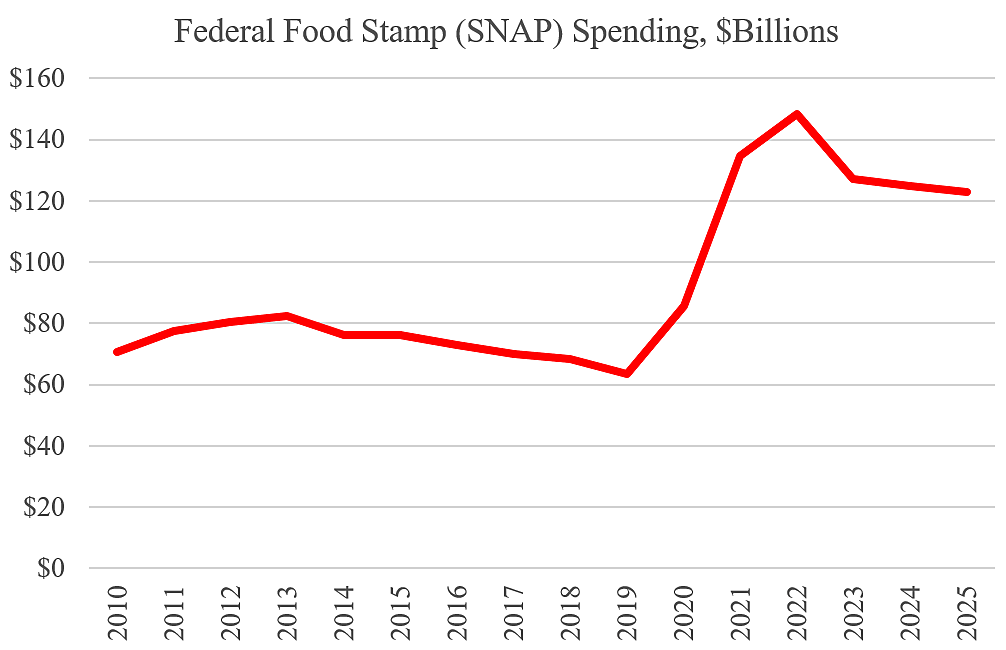Federal government spending soared 40 percent between 2019 and 2023. The government passed large spending bills in response to the pandemic, but spending remains high today even though the crisis has passed.
The ratcheting‐up of spending is evident with the Supplemental Nutrition Assistance Program (SNAP). SNAP benefits, or food stamps, are administered by the states but funded by the U.S. Department of Agriculture (USDA) and ultimately federal taxpayers.
SNAP spending doubled from $63 billion in 2019 to $127 billion in 2023. The Congressional Budget Office (CBO) projects that spending will dip as pandemic benefits expire but will remain far above the 2019 level, as shown in the chart.

Here are some causes of the SNAP spending spike:
- The number of recipients increased from 36 million in 2019 to 42 million in 2023. In 2019, CBO projected that the number would fall to 34 million by 2023.
- The March 2020 pandemic bill provided additional SNAP benefits called emergency allotments, and the Biden administration boosted the amounts. The benefits ended in March 2023.
- The December 2020 pandemic bill temporarily increased benefits 15 percent, and the Biden administration extended the increase through September 2021.
- Some SNAP recipients are subject to a three‐month limit on benefits. This work requirement was suspended during the pandemic but is set to be reinstated in 2023.
- Recipients were allowed to delay eligibility recertification during the early pandemic.
- The 2018 farm bill directed the USDA to update the Thrifty Food Plan (TFP), which helps to determine benefit amounts. Angela Rachidi says the update should have been cost‐neutral, but in 2021 the USDA permanently boosted overall benefits by 21 percent.
- SNAP benefits are adjusted annually for inflation.
Some of these changes were temporary, but the TFP and inflation adjustments boosted benefits permanently. AEI analysts calculate that the maximum benefit for a family of four has jumped 46 percent since 2019, while CBPP analysts calculate that the average per‐person benefit has jumped 50 percent.
SNAP is up for reauthorization in this year’s farm bill, which is an opportunity for policymakers to cut costs. The federal government needs to pursue broad spending reforms to reduce dangerously high budget deficits.
Here are some options for SNAP reform:
- Beef up work requirements, as proposed by two dozen House Republicans.
- Eliminate broad categorical eligibility, which states use to loosen eligibility standards notes Leslie Ford.
- Repeal the 21 percent TFP increase, which was an administrative action that costs taxpayers more than $20 billion a year.
- Convert SNAP to a fixed block grant for the states and cut spending.
- Devolve the SNAP program, including funding, to the states as part of a broader effort to revive federalism. There are few advantages in funding such programs federally but many disadvantages.
Departments:
Themes: